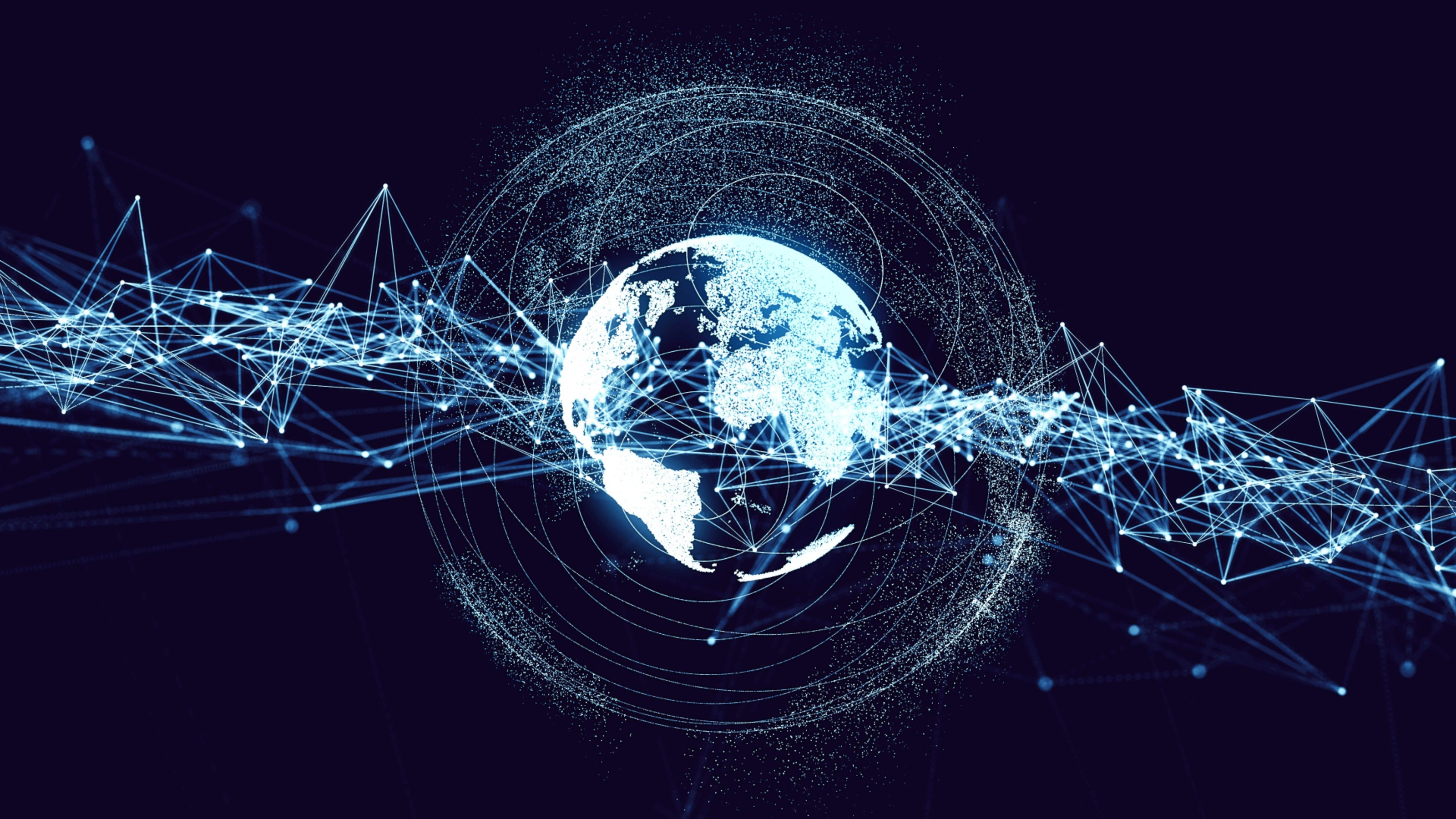Leonard Kleinrock is Distinguished Professor of Computer Science at UCLA. Known as a "Father of the Internet," he developed the mathematical theory of packet networks, the technology underpinning the Internet,[…]
Sign up for the Smarter Faster newsletter
A weekly newsletter featuring the biggest ideas from the smartest people
While the system continues to revolutionize and evolve, its unchanging failure is its inability to monetize.
Question: What do you think is next for the Internet?
Leonard Kleinrock: There’s a number of phases the Internet will go through and some of which we are in right now. One of them is what I like to call, nomadic computing. It used to be that people believed that they were desk-bound. In fact, that they had three wonderful capabilities in there home or office environment. They had a high-speed computer, a laptop or a workstation. Good connectivity, Ethernet, gigabit access perhaps, and a network administrator to help make it all work. A Network administrator in an office typically were loading the software, present new hardware, configure the machine, keep the network up and running.
Nowadays, when we take our laptops and we take them out of our offices, our home, and go on the road, we leave behind the networking and we leave behind that network administrator. Well, wherever you go now you’re going to find high-speed access. But that network administrator you don’t have with you. And for a while, in our evolving here, when I came into an office, it would be almost impossible for me to get my laptop to work with their network, you needed an administrator to reconfigure it, give you a password, maybe change your IP address, etc. Nowadays, a lot of that is automatic. But the ability to provide the same class of service that you have in your office when you’re out on the road, it’s what is called nomadic computing. And that’s begun to happen rather well these days. In some parts of the world, it’s harder. But nowadays when you travel, you probably don’t think about it. You just log on to the local Wi-Fi network and you’re up and running. It wasn’t always that way. It’s still a little complicated at times, if you have a virtual private network or static IP address or some other special thing on your machine, you may have trouble configuring it. You need some automatic ways to do it. Nomadic computing. But that’s maturing now.
Second phase. Most people believe that Cyberspace sits behind the screen of their workstation or their cell phone. The move that’s going to happen and is starting to happen is that, cyberspace is coming out from behind that screen and entering our physical environment. For example, the walls of this room should know I’m here. I should be able to walk in this room, the room should know it’s me, and I should be able to get services from this environment. I should be able to ask, for example, where’s the high-speed printer, or high resolution display, or projector, and the room should answer me in speech, maybe in a hologram, maybe with a display that pops up. This chair, my fingernails, my eyeglasses, my desk, my automobile, my hotel room, the Internet should be everywhere. And what’s going to make that happen is what we call, embedded technology. The small micro or nano devices that are actuators, sensors, logic processing, memory, displays, microphones, speakers, embedded in our environment. So the Internet presence will be everywhere. It’ll follow me around, in fact, many of the things we carry around today, these smart phone devices and such like, it’s an example of the Internet coming out and being in our environment wherever we go. But they’ll be embedded as well.
The next thing is, these smart spaces that I’m describing where cyberspace comes out and leaches into our physical world, will disappear, as I said earlier. They’ll become invisible. They’ll just be there. Everything will be Internet enabled. That’s the second phase.
The third phase is ubiquity. Which means wherever I go, I should be accepted as a friendly instead of an alien, that’s nomadic computing. The environment in which I come should be a smart space, that’s the second phase. But this capability should be everywhere I go. Now, one of the first ways in which we had ubiquitous Internet access was many years ago when the dial-up modem became available. I could take a device and anywhere I could find a telephone, I could get on the Internet. And reach out to the world. Low speed, clunky, noisy, not reliable, but ubiquitous. Well that capability is now being deployed at much higher speeds, much more reliability, some of the 3G the 4G networks, the environment is becoming alive with ubiquitous capability.
The fourth phase is what I like to call, intelligent agents; smart intelligent software agents. We deploy these things into the Internet and they provide services to us. They know what we want, they reach out and gather news for us, they give us alerts, they tell us what’s happening in the environment add our service on a customized basis. What I like to call, mass personalization where everyone has their profile, their preferences, their privileges, their needs. The environment knows about it and these software agents deliver the services that you ask for and control a lot of the larger level services of our society. So they provide functionality.
We see that today. Our whole finance system is based on some of these software agents and they’ve caused us some problems, like the other day when the Dow dipped by 1,000 points, that was software agents acting on response to basically signals that they received, which in fact were erroneous.
So, the last phase, and now we walk into the applications domain, is that everything is going mobile. And so the applications will be largely focused on mobility. Geographically focused applications, geo-location, personalization, delivering services wherever we go based on what we need, who we are, where we are, and what we’re looking for. And those applications, some of the social networking applications have been centered on that aspect of it, a lot of the SMS and the Twitter is based on the device you have in your hand, possibly your machine, but mobile application is where it’s coming in.
And in fact, many of the services these days are enormously profitable. For example, have you ever purchased a ring tone for your cell phone? They cost 99 cents. Now when I ask people that question, the older generation, no, never. The younger generation, a fair number, but the fact is, that’s a $5 billion industry as of a few years ago. Things like delivering video, sports, entertainment, all of those are multi-billion dollar industries based on services that are delivered to you either to your laptop or to your mobile device.
So the world is full of ways to entertain yourself, but one of the failings of the Internet, now that we’re talking about applications that people are spending money on is that there’s not really good ways to monetize things on the Internet. We know there are three things that sell, actually four; sex, celebrity, entertainment, and shopping. Those things people are willing to spend money on. But most of the rest of it, people expect to have free. And this whole issue of mindset saying the Internet delivers free services, information, has distorted in many ways, the typical business models that people are used to.
Leonard Kleinrock: There’s a number of phases the Internet will go through and some of which we are in right now. One of them is what I like to call, nomadic computing. It used to be that people believed that they were desk-bound. In fact, that they had three wonderful capabilities in there home or office environment. They had a high-speed computer, a laptop or a workstation. Good connectivity, Ethernet, gigabit access perhaps, and a network administrator to help make it all work. A Network administrator in an office typically were loading the software, present new hardware, configure the machine, keep the network up and running.
Nowadays, when we take our laptops and we take them out of our offices, our home, and go on the road, we leave behind the networking and we leave behind that network administrator. Well, wherever you go now you’re going to find high-speed access. But that network administrator you don’t have with you. And for a while, in our evolving here, when I came into an office, it would be almost impossible for me to get my laptop to work with their network, you needed an administrator to reconfigure it, give you a password, maybe change your IP address, etc. Nowadays, a lot of that is automatic. But the ability to provide the same class of service that you have in your office when you’re out on the road, it’s what is called nomadic computing. And that’s begun to happen rather well these days. In some parts of the world, it’s harder. But nowadays when you travel, you probably don’t think about it. You just log on to the local Wi-Fi network and you’re up and running. It wasn’t always that way. It’s still a little complicated at times, if you have a virtual private network or static IP address or some other special thing on your machine, you may have trouble configuring it. You need some automatic ways to do it. Nomadic computing. But that’s maturing now.
Second phase. Most people believe that Cyberspace sits behind the screen of their workstation or their cell phone. The move that’s going to happen and is starting to happen is that, cyberspace is coming out from behind that screen and entering our physical environment. For example, the walls of this room should know I’m here. I should be able to walk in this room, the room should know it’s me, and I should be able to get services from this environment. I should be able to ask, for example, where’s the high-speed printer, or high resolution display, or projector, and the room should answer me in speech, maybe in a hologram, maybe with a display that pops up. This chair, my fingernails, my eyeglasses, my desk, my automobile, my hotel room, the Internet should be everywhere. And what’s going to make that happen is what we call, embedded technology. The small micro or nano devices that are actuators, sensors, logic processing, memory, displays, microphones, speakers, embedded in our environment. So the Internet presence will be everywhere. It’ll follow me around, in fact, many of the things we carry around today, these smart phone devices and such like, it’s an example of the Internet coming out and being in our environment wherever we go. But they’ll be embedded as well.
The next thing is, these smart spaces that I’m describing where cyberspace comes out and leaches into our physical world, will disappear, as I said earlier. They’ll become invisible. They’ll just be there. Everything will be Internet enabled. That’s the second phase.
The third phase is ubiquity. Which means wherever I go, I should be accepted as a friendly instead of an alien, that’s nomadic computing. The environment in which I come should be a smart space, that’s the second phase. But this capability should be everywhere I go. Now, one of the first ways in which we had ubiquitous Internet access was many years ago when the dial-up modem became available. I could take a device and anywhere I could find a telephone, I could get on the Internet. And reach out to the world. Low speed, clunky, noisy, not reliable, but ubiquitous. Well that capability is now being deployed at much higher speeds, much more reliability, some of the 3G the 4G networks, the environment is becoming alive with ubiquitous capability.
The fourth phase is what I like to call, intelligent agents; smart intelligent software agents. We deploy these things into the Internet and they provide services to us. They know what we want, they reach out and gather news for us, they give us alerts, they tell us what’s happening in the environment add our service on a customized basis. What I like to call, mass personalization where everyone has their profile, their preferences, their privileges, their needs. The environment knows about it and these software agents deliver the services that you ask for and control a lot of the larger level services of our society. So they provide functionality.
We see that today. Our whole finance system is based on some of these software agents and they’ve caused us some problems, like the other day when the Dow dipped by 1,000 points, that was software agents acting on response to basically signals that they received, which in fact were erroneous.
So, the last phase, and now we walk into the applications domain, is that everything is going mobile. And so the applications will be largely focused on mobility. Geographically focused applications, geo-location, personalization, delivering services wherever we go based on what we need, who we are, where we are, and what we’re looking for. And those applications, some of the social networking applications have been centered on that aspect of it, a lot of the SMS and the Twitter is based on the device you have in your hand, possibly your machine, but mobile application is where it’s coming in.
And in fact, many of the services these days are enormously profitable. For example, have you ever purchased a ring tone for your cell phone? They cost 99 cents. Now when I ask people that question, the older generation, no, never. The younger generation, a fair number, but the fact is, that’s a $5 billion industry as of a few years ago. Things like delivering video, sports, entertainment, all of those are multi-billion dollar industries based on services that are delivered to you either to your laptop or to your mobile device.
So the world is full of ways to entertain yourself, but one of the failings of the Internet, now that we’re talking about applications that people are spending money on is that there’s not really good ways to monetize things on the Internet. We know there are three things that sell, actually four; sex, celebrity, entertainment, and shopping. Those things people are willing to spend money on. But most of the rest of it, people expect to have free. And this whole issue of mindset saying the Internet delivers free services, information, has distorted in many ways, the typical business models that people are used to.
Recorded on May 14, 2010
▸
7 min
—
with





